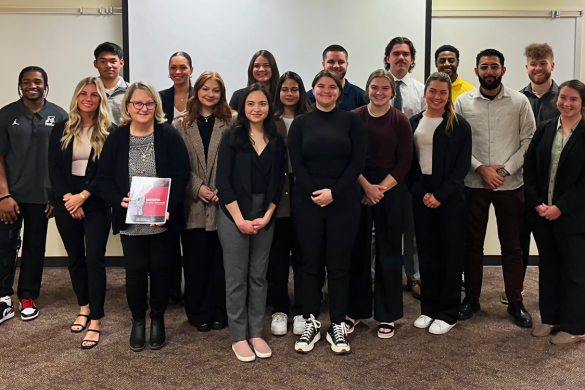The University of Indianapolis has developed safety plans to protect campus in case of an active shooter or a targeted murder, such as what happened at Purdue University, Jan. 22.
Vice President for Student and Campus Affairs and Dean of Students Kory Vitangeli said that the officers of the University of Indianapolis Police Department have undergone “extensive” active shooter training.
Vitangeli said that there are plans in place to keep the students, faculty and staff safe in the event of an emergency. Notifications and information would be sent out via Watchdog, UIndy’s emergency alert system that was developed in response to the Virginia Tech shooting. First responders would set up a command center, designate an incident commander and work with an outside force, most likely Indianapolis Metropolitan Police Department and the Indiana State Police.
UIPD Chief and Director of Campus Safety David Selby and Vitangeli both believe in training the student body to maintain safety. As a result, the university’s Emergency Management Plan has been made available to the public.
In the event of an active shooter on the campus, Selby said that an active shooter team would be assembled. According to Selby, an active shooter team is different from a S.W.A.T. team, in that S.W.A.T. is “more methodical” and takes longer to assemble properly.
“Active shooter teams are quick. They mobilize fast and go right to wherever the shooter is,” Selby said. “Say there was a shooting in Schwitzer Hall. You’re going to probably have a five-man team—a front guard, a rear guard, two wingmen and a team leader. They’re going to go right to where that shooter is, and their objective is to just neutralize that shooter.”
Selby said that dealing with active shooters takes “joint operation” from many police departments. With this knowledge, the campus police have completed two active shooter training sessions in the past 12 months, with the aid of IMPD. This upcoming summer, the campus police officers and volunteering cadets will be training in building searches.
The campus police’s 10 full-time officers, 11 part-time officers and Selby himself all have completed active shooter training during their careers.
Vitangeli and Selby both said that the university has a protocol for handling possible problems with students.
A behavioral committee has been established to monitor and assess any possible warning signs in a student’s behavior. Although the identities of those who serve on the council are kept secret, Selby said that it was made of people who have a significant impact on students’ lives.
The council receives information from students, faculty and staff regarding anything troubling. A sudden change in attitude or academic performance are just two things that could serve as red flags. Threats on social media sites are also monitored with seriousness.
“You’ve got to take it seriously … every time. And that’s where people get mad at me sometimes. Because, look, I’m responsible for everybody’s safety around here. We can’t make those mistakes,” Selby said.
Overall, Selby is confident about the ability of his officers to respond to a crisis of this magnitude. He encourages faculty and staff to be prepared and informed and to watch “Run, Hide, Fight” on Youtube. That public service announcement was produced by the Department of Homeland Security and provides information on surviving an active shooter.





